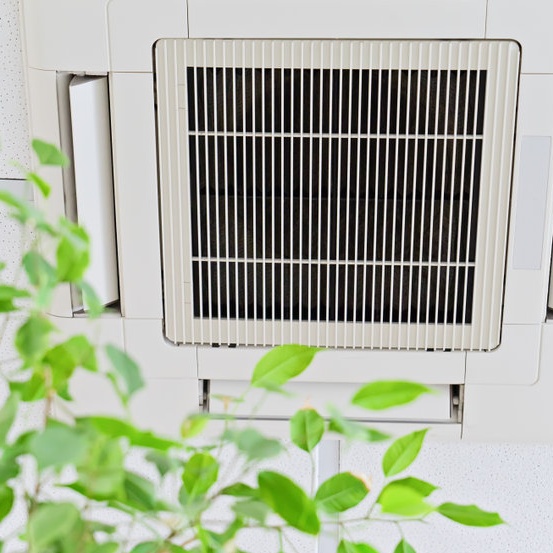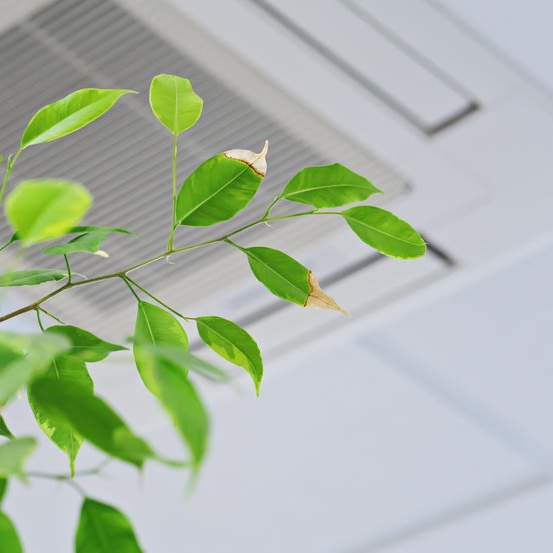
So, how is indoor air more polluted?
Boy, there is nothing like getting home after a day of shopping or working in the big city smog is there? Or is getting home any better when it comes to indoor air quality? Experts tell us that no, the IAQ at home is actually worse than the outdoor air these days.
In fact, the indoor air quality is five times more polluted than that “fresh” outdoor air. So, get an air purifier and all is well, right? Nope, not exactly. An air purifier will only handle certain things like dust and pollen. The problem with our indoor air quality goes further than those two things.
That may have surprised many of you, especially those of us that like to open up the windows and let the ‘fresh air’ inside. However, homes today do not have adequate ventilation because we’re all concerned about energy efficiency. We’ve locked ourselves up with the very things that can slowly kill us, those indoor air pollutants. This is especially true of new build homes today; their indoor air quality is really poor.
How does indoor air quality affect our health?
The short term effects on our indoor air quality comes result in eye and throat irritations. The long term effects are cancer and respiratory disease. What kind of pollutants are creating indoor air quality problems, just what affects indoor air quality? There are several factors, with the main ones affecting our indoor air quality being:
- Chemicals – perfume and hair spray, cleaning solvents and furniture polish, crafts and hobby supplies, pesticides, carpet dye, carpet fibers, adhesives, glues, sealants, paints, varnish, and air fresheners.
- Radon – rock, soil, building materials, and water.
- Particles – fireplaces, gas and kerosene heaters, tobacco, woodstoves
Among those things, things like our pets and the humidity, microbes, pests, temperature, and ventilation all impact our indoor air quality.
How do you test air quality in your home?
Indoor air quality for homes is important for homes with a family member that has allergies or respiratory issues. Before you can improve the IAQ of your home though, you need to know what issues exist in your home’s indoor air quality, if any.
So, yes, there are companies that will be glad to come test your home’s indoor air quality, for a fee. While that is well worth the money, try a DIY test first, and if you find some issues, then call one of those companies for more accurate and precise testing. The following are three tests you can do yourself to check your home’s indoor air quality:
Air Quality Mold Testing
Everywhere you go today, indoors, outdoors, everywhere, there are mold spores. But when there is a musty odor, that usually means there are mold spores setting up camp on damp organic surfaces and breeding. Those growing mold spore colonies irritate asthma, allergies, and other respiratory issues.
With the following steps, you can find if your home is a mold spore breeding ground for harmful mold with your HVAC air filter or the ductwork with these steps with a mold test kit you can purchase at your local home improvement store:
- Dampen a clean, sterile sponge in a rinse solution, then wipe an area of the air filter or a supply duct vent.
- Place that sponge in a rinse container then pour more of the rinse solution over it.
- Shake the container then pour the contents in a clean sterile cup.
- Compare the solution’s color to the chart from the test kit. The color will tell you if you have mold growing through the air filter or the ductwork.
Air Quality Radon Testing
For non-smokers, radon is a major cause of lung cancer. This gas is colorless and odorless gas and comes up from uranium that breaks down in the soil under your home.
In addition to at-home air quality testing kit, you can do the following test, getting the results in 7 days or less. Set a test container filled with activated charcoal granules that will absorb any radon gas that may be in the air. Wait a few days and mail the sealed container to a lab to be analyzed.
Air Quality VOC Testing
VOC (volatile organic compounds) are chemicals off-gassed by household items you use every day, like benzene, chloroform, formaldehyde, styrene, xylene, and other toxic VOCs. When overexposed, people suffer from headaches and nasal irritations, and it has been linked to cancer and liver damage. There is a VOC detection kit that can test the indoor air quality within 24 hours. Purchase the kit and follow the instructions, then sent off to the lab for analyzing.
How can I improve indoor air quality?
No matter what and how to fix indoor air quality you may learn and try, you won’t be able to eliminate every allergen inside your home. You can, however, minimize them with some basic changes:
- Keep Your House Clean. Yes, that isn’t a favorite, but it is the first thing on the list. A clean house is a healthier house because it cuts down the animal dander, dust, and mold accumulating. With a focus on these things, you’ll see (feel) improvement:
- Vacuum the carpets and rugs a minimum of once a week with a HEPA filter vacuum. Hardwood flooring will cut the allergens back versus wall-to-wall carpet.
- Regular change and wash your bedding and drapes. The recommended temperature is 130° F to remove allergens. Use dust mite–proof covers on your box springs, mattresses, and pillows.
- Clear out ant clutter. This is where dust builds up and triggers reaction.
- Get rid of your indoor plants. Yes, they are pretty, but they collect dust and mold then foster more mold growth. Yes, some plants are said to improve indoor air quality with the oxygen they release. However, they can still trigger allergies for a lot of people and can actually cause more problems than they do any good.
- Change the air filters. When you have a HVAC system, the filters must be changed every 30 days. Use an electrostatic filter would be even better to ensure airborne irritants and dust get trapped and not recirculated. Indoor air quality and hvac systems have built a history that we need to learn from.
- Have the air ducts cleaned by a professional. They will remove any trapped dust and while there are many that say it doesn’t help much, what little it does is help.
- Install an air purifier system or set up room air purifiers. The ionic type of purifiers captures some of the irritants that trigger allergy symptoms. No, they won’t remove all of them, but they will minimize them.
- In the damp areas of your home, like the basement, bathrooms, and laundry room, put a dehumidifier unit. This will help with the prevention of mold growth. Make sure bathrooms are well ventilated and when you see mold, scrub it away.
- Even in the midst of winter, open a window for a few minutes every so often to let some fresh outdoor air inside. Use the exhaust fan in the kitchen while cooking to remove any possible air contaminants.

What are common indoor air pollutants?
In the case of indoor air quality, 13 is the unlucky number. The EPA has listed the following 13 matters as the most common indoor air pollutant. Each of these falls in to either biological pollutant, combustion byproduct, legacy pollutant, or VOCs.
- Asbestos
- Biological Pollutant
- CO – Carbon Monoxide
- Cookstoves and Heaters
- Formaldehyde
- Lead
- Nitrogen Dioxide
- Pesticides
- Radon Gas
- Indoor Particulate Matter
- Secondhand Smoke/Environmental Tobacco Smoke
- VOC – Volatile Organic Compounds
- Wood Smoke
Need help with your home’s indoor air quality in Riverside, CA? Call (951) 336-1541 today!
